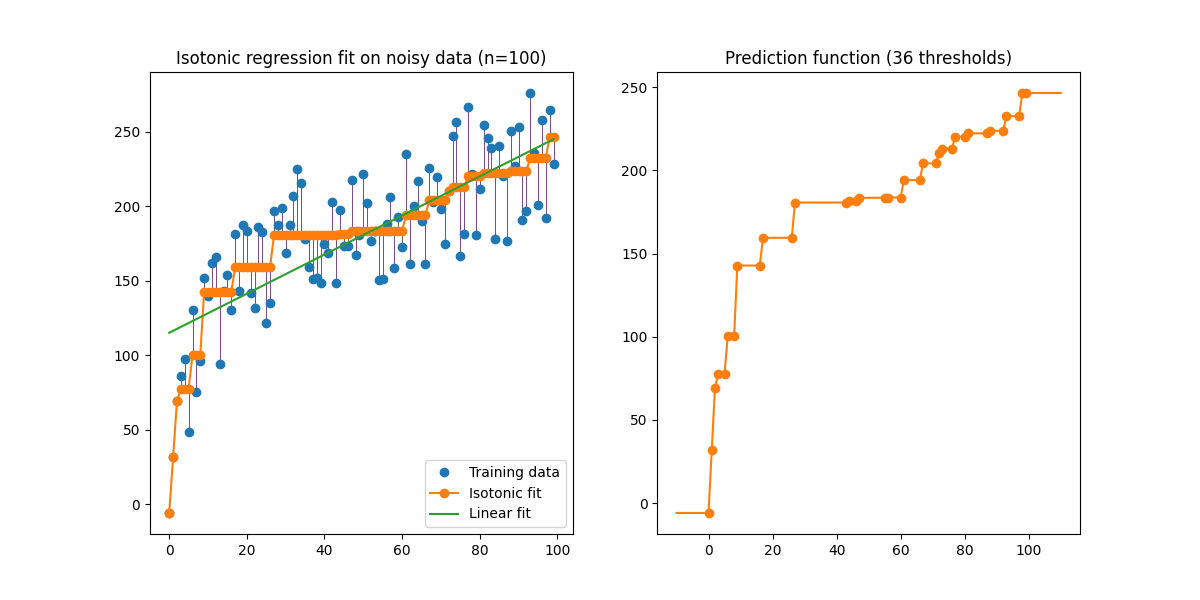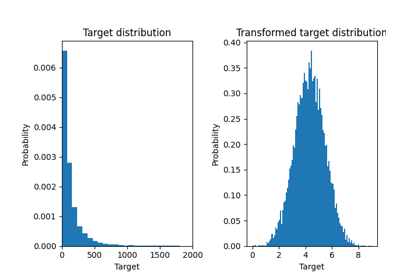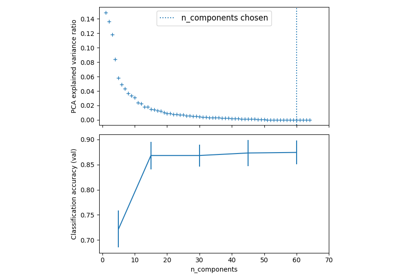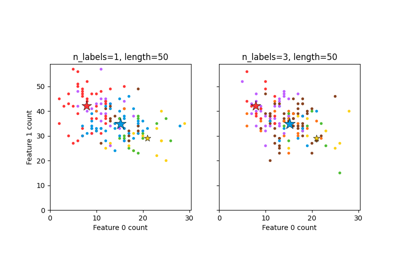Note
Go to the end to download the full example code. or to run this example in your browser via Binder
保序回归#
在生成的数据上展示保序回归(具有同方差均匀噪声的非线性单调趋势)。
保序回归算法在训练数据上找到函数的非递减近似,同时最小化均方误差。这种非参数模型的优点在于,它除了单调性之外,不对目标函数的形状做任何假设。为了比较,还展示了线性回归。
右侧的图显示了通过阈值点的线性插值得到的模型预测函数。阈值点是训练输入观测值的一个子集,其匹配的目标值由保序非参数拟合计算得出。
# 作者:scikit-learn 开发者
# SPDX-License-Identifier: BSD-3-Clause
import matplotlib.pyplot as plt
import numpy as np
from matplotlib.collections import LineCollection
from sklearn.isotonic import IsotonicRegression
from sklearn.linear_model import LinearRegression
from sklearn.utils import check_random_state
n = 100
x = np.arange(n)
rs = check_random_state(0)
y = rs.randint(-50, 50, size=(n,)) + 50.0 * np.log1p(np.arange(n))
拟合等渗回归和线性回归模型:
ir = IsotonicRegression(out_of_bounds="clip")
y_ = ir.fit_transform(x, y)
lr = LinearRegression()
lr.fit(x[:, np.newaxis], y) # x needs to be 2d for LinearRegression
绘制结果:
segments = [[[i, y[i]], [i, y_[i]]] for i in range(n)]
lc = LineCollection(segments, zorder=0)
lc.set_array(np.ones(len(y)))
lc.set_linewidths(np.full(n, 0.5))
fig, (ax0, ax1) = plt.subplots(ncols=2, figsize=(12, 6))
ax0.plot(x, y, "C0.", markersize=12)
ax0.plot(x, y_, "C1.-", markersize=12)
ax0.plot(x, lr.predict(x[:, np.newaxis]), "C2-")
ax0.add_collection(lc)
ax0.legend(("Training data", "Isotonic fit", "Linear fit"), loc="lower right")
ax0.set_title("Isotonic regression fit on noisy data (n=%d)" % n)
x_test = np.linspace(-10, 110, 1000)
ax1.plot(x_test, ir.predict(x_test), "C1-")
ax1.plot(ir.X_thresholds_, ir.y_thresholds_, "C1.", markersize=12)
ax1.set_title("Prediction function (%d thresholds)" % len(ir.X_thresholds_))
plt.show()

请注意,我们显式地将 out_of_bounds="clip" 传递给 IsotonicRegression 的构造函数,以控制模型在训练集中观察到的数据范围之外进行外推的方法。这种“剪辑”外推可以在右侧的决策函数图中看到。
Total running time of the script: (0 minutes 0.066 seconds)
Related examples





